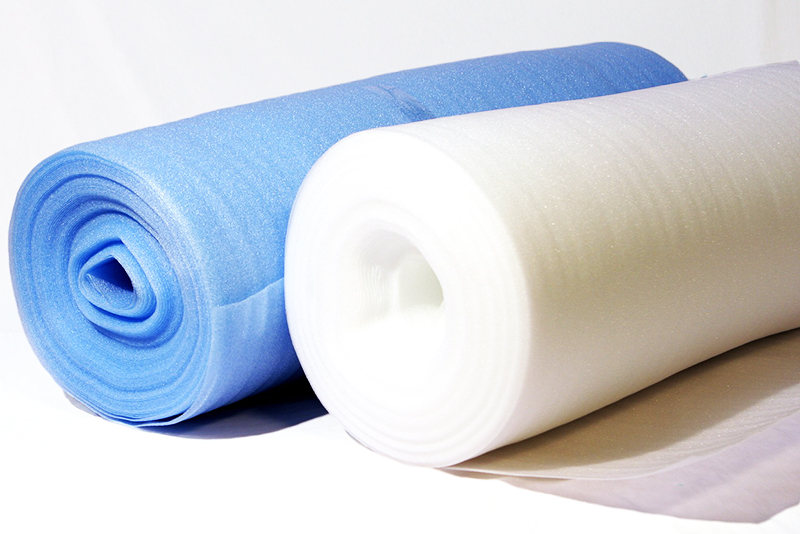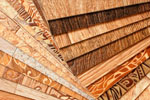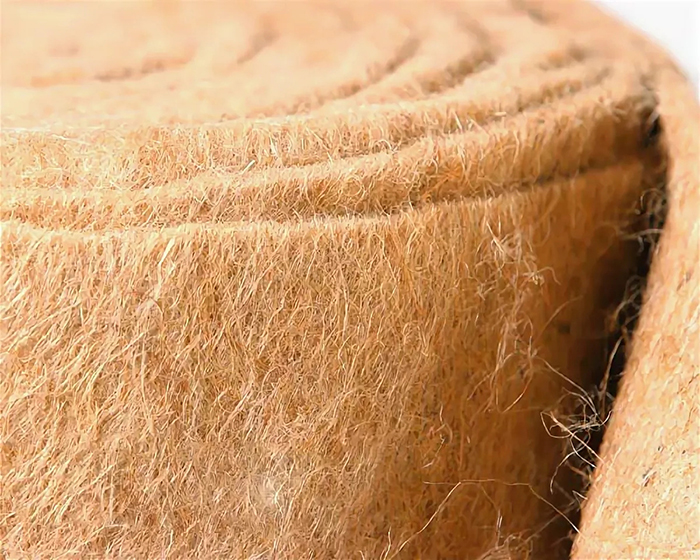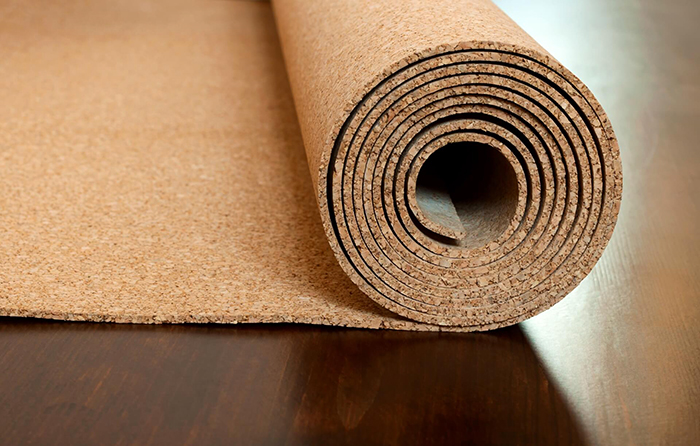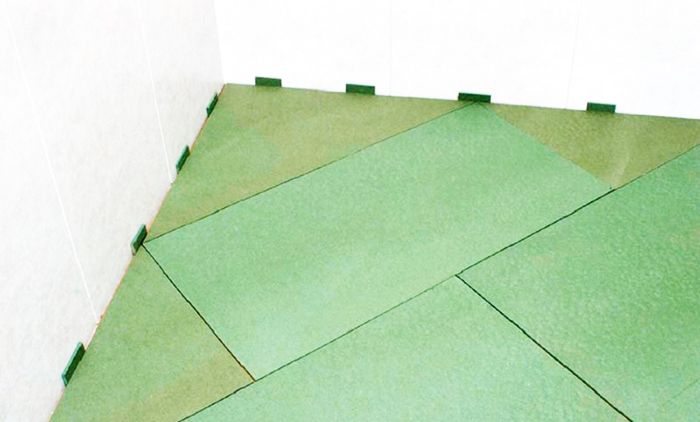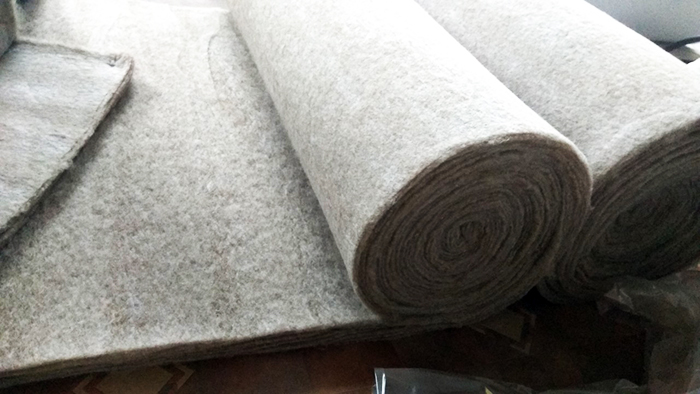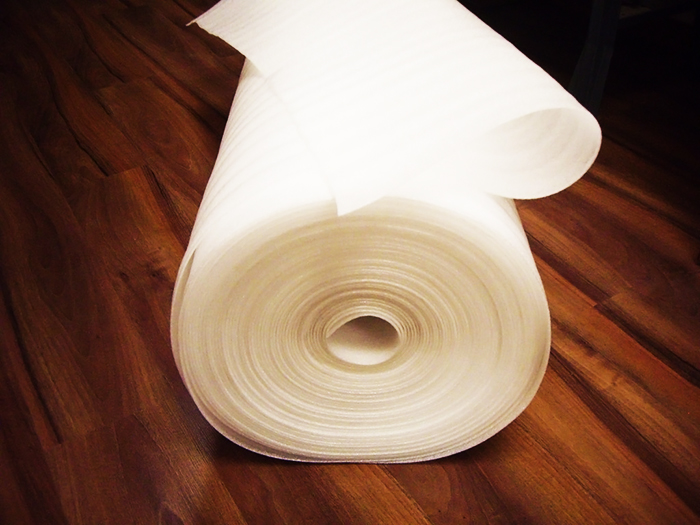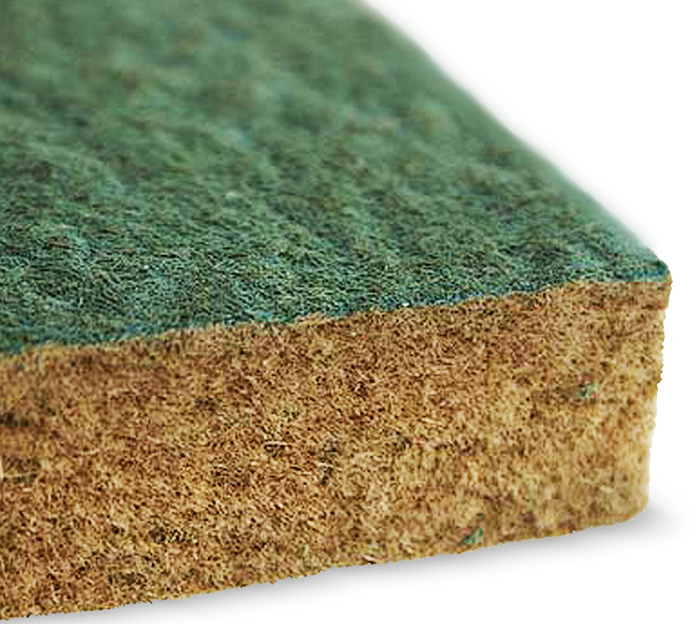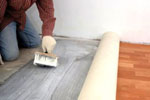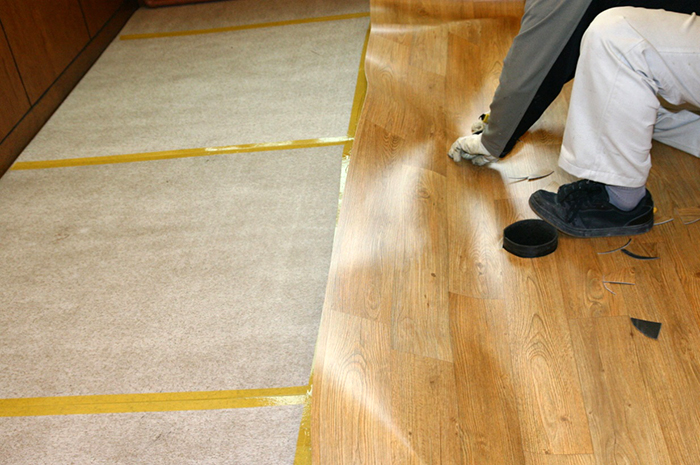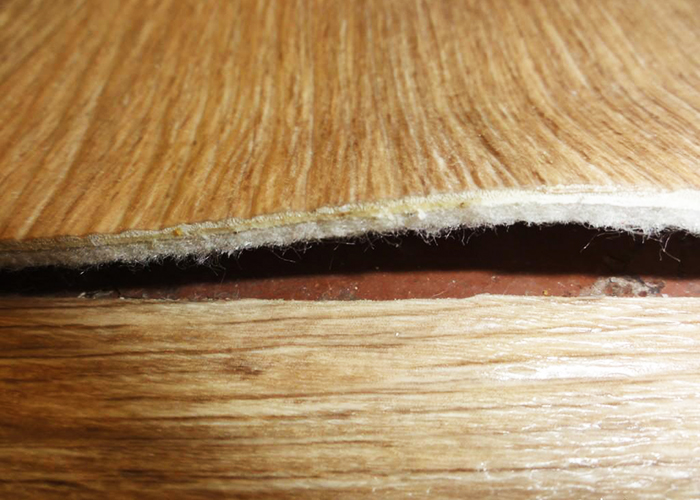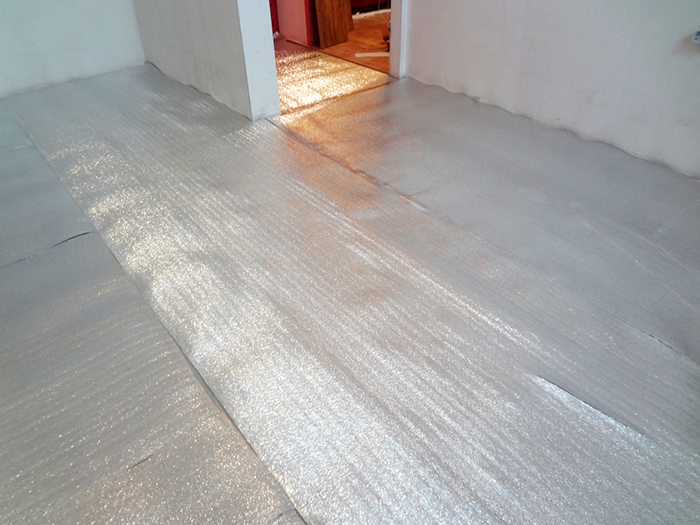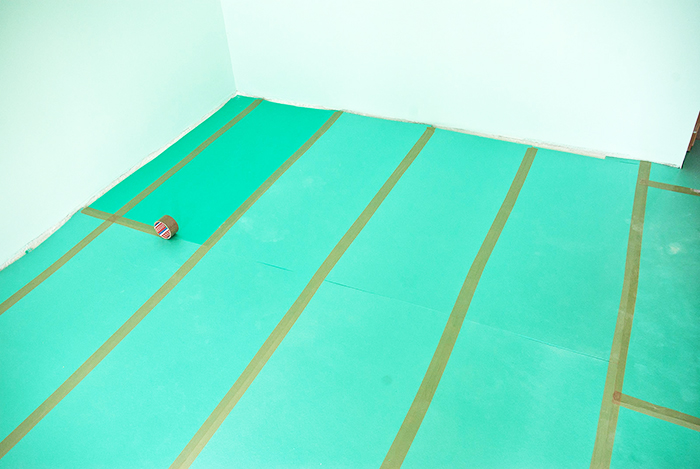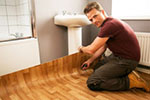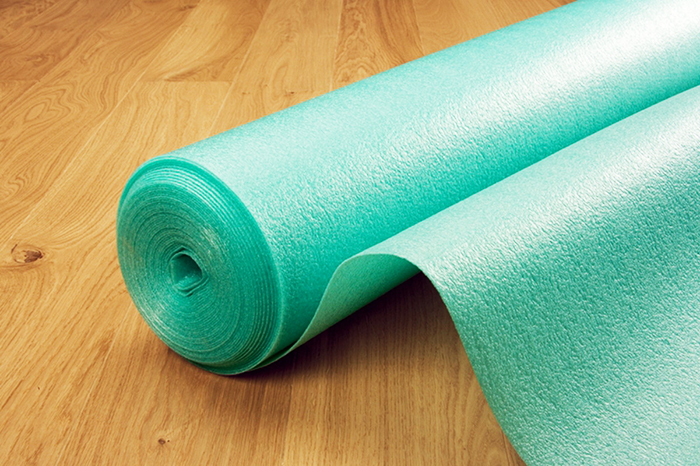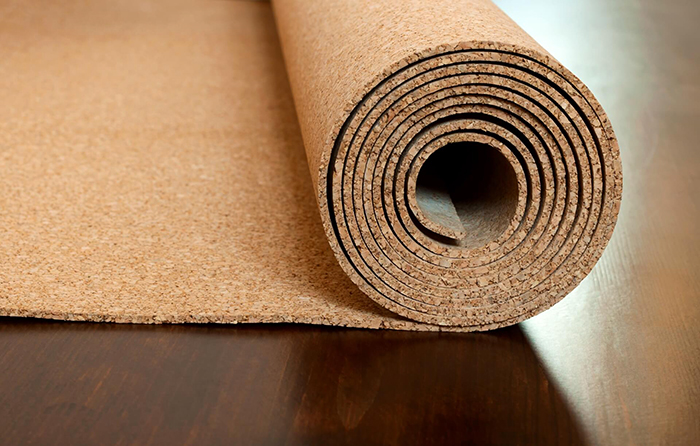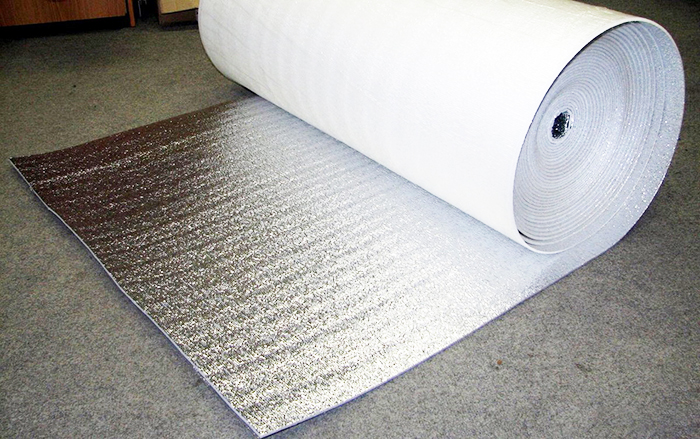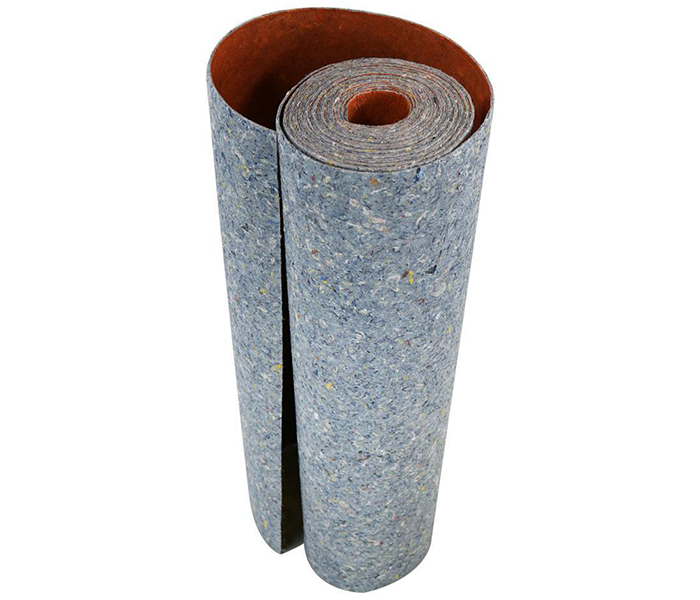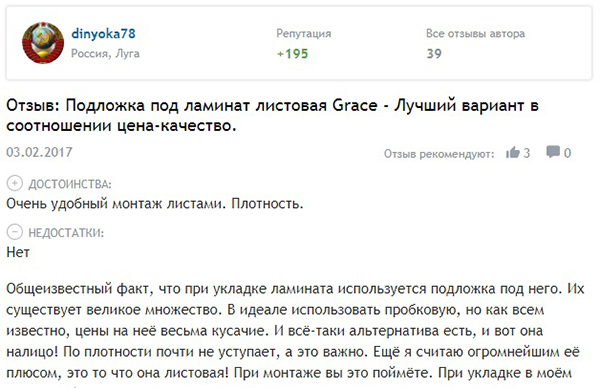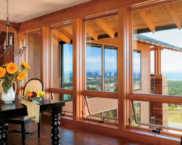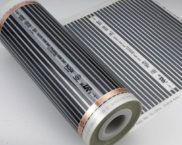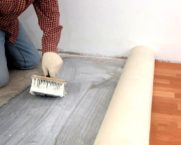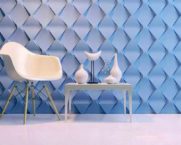Which linoleum substrate is better: comparison of materials and scope
To improve the technical characteristics and extend the life of linoleum, many manufacturers and craftsmen recommend using special materials as an initial, rough layer. In this article, we will analyze which linoleum substrate is better, what functions it performs, when it is necessary, and when you can do without it. We will also provide a brief overview of popular manufacturers, consider their products and reviews on it.

The building materials market offers many varieties of substrates, but not all of them can be used for laying linoleum
PHOTO: polonest.ru
The content of the article [Hide]
Underlay functions
The linoleum underlay prevents the flooring from contacting the substrate. It performs the following functions:
Unlike laminate, linoleum is a soft floor material, therefore, the optimal thickness and rigidity of the substrate should be selected so that the surface of the floor covering does not deform under external influences.
The type of base must also be taken into account, in particular its effect on the interlayer material. Concrete floors and sand-cement screeds that have direct contact with the ground can absorb moisture, therefore, in addition to waterproofing, it is advisable to choose a moisture-resistant substrate.
Related article:
Technical parameters and performance characteristics by type
Thickness can vary between 2-10 mm:
Depending on the influence of the external environment and the characteristics of the operation of the room, additional properties may be required from the substrate:
Jute
The jute fiber of which the backing is made is resistant to combustion, rot and mildew. It is an efficient, environmentally friendly insulation, which is realized both in mats and in rolls. Jute is widely used as the bottom layer of premium heterogeneous linoleum. Due to its rather high cost, this material is not widely used in Russia. Typically only used if there is no other alternative. When purchasing it, you need to pay attention to the density. Even when pressed firmly with your fingers, it should not deform. Thick and soft jute mats provide better thermal insulation, but as a result of prolonged use, the risk of dents on the flooring increases significantly.
Cork
The material consists of crushed cork wood, pressed with glue. Thickness from 1.5 to 4 mm in rolls and over 4 mm in mats. Has a lot of advantages:
Among the shortcomings, one can note the rather high cost of the material, the price of which is tied to fluctuations in the exchange rate, since all raw materials are imported.
There are several types of cork backing:
Coniferous
The coniferous backing consists of shredded wood, wood fibers and pine needles, compressed with minimal or no adhesives. It is most often realized in the form of mats with a thickness of 3.6-7 mm. In rolls (option with glue) it comes across much less often, thickness 2-3.5 mm. The density of the material is 240 kg / m³. Has a low thermal conductivity - less than 0.050 W / (m ∙ K). It absorbs shock noises well. Provides an optimal level of shock absorption and significantly increases the durability of linoleum. The material is completely environmentally friendly. Mats with a thickness of more than 4.5 mm at the ends have a thorn-groove connection, which greatly facilitates installation and completely eliminates the formation of joining lines on the linoleum surface.
The substrate has an average resistance to mechanical stress, is quite sensitive to moisture, and can absorb odors. Another significant drawback is the rather high cost.
Linen
Linen backing consists of environmentally friendly material - linen fibers, bonded by mechanical pressing without the use of glue mixtures. It is sold in rolls with a thickness of 5-8 mm, density is 0.4-0.7 kg / m². Low thermal conductivity (up to 0.05 W / m³) allows it to be used for insulating the floors of the first floor. Additional benefits include the following:
Felt
Non-woven polyester fabric with good insulating properties, especially the level of impact noise is reduced. Most felt substrates are impregnated with special non-toxic compounds that make the material less susceptible to decay and oxidation. During operation, the felt compaction and shrinkage are possible, and therefore dents can form on the surface of the flooring material in places of frequent use.
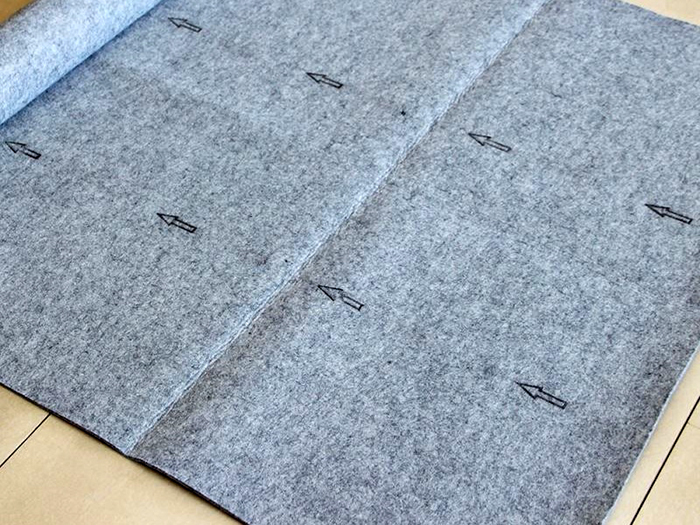
Roll felt has an optimal combination of technical characteristics and cost
PHOTO: russian.alibaba.com
Polymer materials
Polymeric materials - polyethylene or polypropylene - are used as synthetic linings for linoleum. They are sold under various trade marks, for example, penoizol, isolone, etc. Available in rolls. They differ in small thickness and rather mediocre technical characteristics. During operation, such a substrate cakes and pushes through, as a result of which characteristic waves are formed on the linoleum surface. Despite this, the material is quite popular due to its budgetary cost. Most home craftsmen and very many linoleum manufacturers strongly discourage the use of foamed polymer materials as a substrate.
Foil
Consists of two layers: expanded polyethylene (polypropylene) and aluminum foil. More often used under laminate and warm floor... Aluminum gives the composite extra strength and reflects infrared radiation back into the room, making it an extremely effective thermal insulation material. It is laid with a reflective layer to the room.
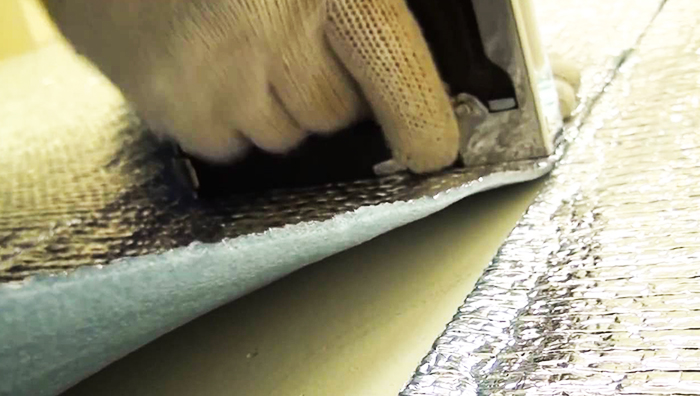
The process of installing a foil substrate - it is shot with a construction stapler to a wooden base
PHOTO: i.ytimg.com
Combined
They are one of the most expensive, but the most effective. The composition can be completely natural, synthetic or blended, which uses jute, linen and synthetic fibers. Thickness up to 3 mm, roll length up to 10 m.It has a number of advantages over both synthetic and purely natural materials:
Related article:
When you need a backing and when you can do without it
There is a list of factors, each of which leads to the need to use different types of substrates for linoleum:
Linoleum can be laid without an additional substrate in the following cases:
In what cases and which linoleum substrate is better
The choice of the optimal substrate material for linoleum depends on two main factors (not taking into account cost): the substrate material and the operational requirements. It should be noted that the subfloor material imposes only some restrictions, which can be easily circumvented by making, for example, a polymer-cement leveling fill.
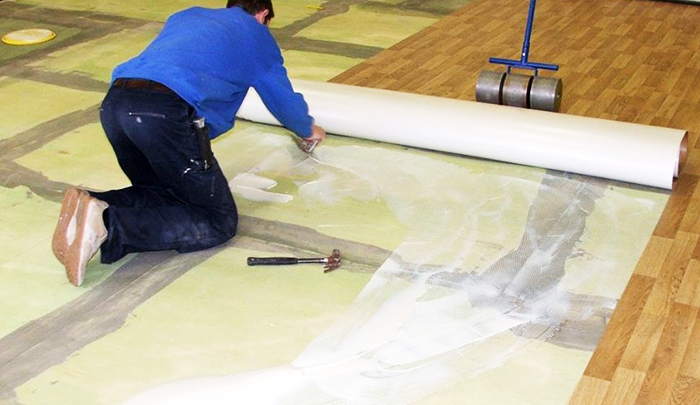
Laying linoleum on extruded polystyrene foam is allowed only in the case of careful sealing of the cracks
PHOTO: zamolotkom.ru
Fiber and cork substrates with a thickness of 5 mm or more, as well as foam polymer coatings, are also used as soundproofing materials.
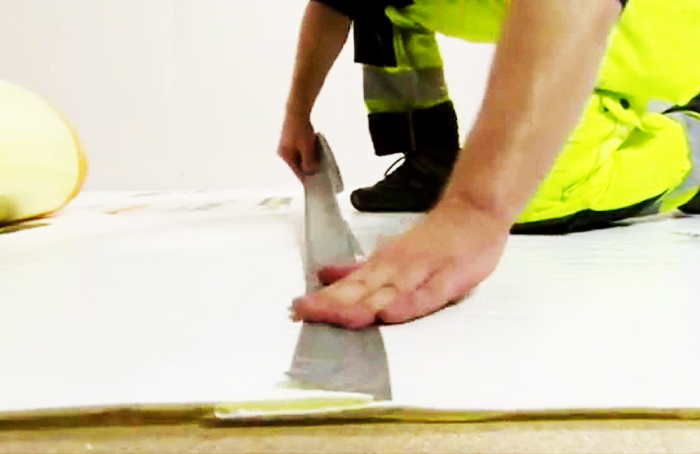
There are also special sound-absorbing materials, for example, weberfloor acoustic floor
PHOTO: i.ytimg.com
Related article:
Leading manufacturers, their products and reviews
A short overview of the best linoleum substrates was compiled on the basis of aggregate information taken from Internet resources: vyborok.com, otzovik.com, irecommend.ru.
Table 1. Average cost of linoleum substrates
| Substrate type | Model / Manufacturer | Features and scope | Price as of October 2019, RUB |
|---|---|---|---|
| Jute | EcoRoll / SoundGuard | For linoleum, laminate and parquet. A dense roll material, 3.5 mm thick, consisting of randomly intertwined jute and polyester fibers in a combination of 50 × 50 | 1700 (per roll 10 m²) |
| Jute | 20791 / Resource | For laminate, linoleum. Roll, natural jute, thickness 4 mm. Well compensates for unevenness of the base, antifungal impregnation. Has an unpleasant odor that disappears in a few weeks | 1300 (per roll 10 m²) |
| Foam-polyethylene | NPE-3 / Porileks | High pressure polyethylene. Biologically neutral, not susceptible to fungus and decay. Roll material, thickness 3 mm | 950 (per roll 52.2 m²) |
| Foam-propylene | 12331 / Isopak | Roll material for laminate, linoleum, parquet boards. Thickness 3 mm. High performance of thermal insulation and noise absorption | 1300 (per roll 52.5 m²) |
| Foam-propylene | 87408 / Professional | Roll material for laminate, linoleum, parquet boards. Thickness 3 mm. High performance of thermal insulation and noise absorption | 1100 (for 10 m²) |
| Foam-propylene | 2184 / Tuplex | Roll material for laminate, linoleum, parquet boards. Thickness 3 mm. High performance of thermal insulation and noise absorption | 3800 (for 33 m²) |
| Cork | BASIS / Cork | Environmentally friendly natural, hypoallergenic material. Resistant to mold and mildew. Sold in rolls, 2 mm thick | 1250 (for 10 m²) |
| Cork | 955 / MGO | Environmentally friendly natural, hypoallergenic material. Resistant to mold and mildew. Sold in rolls, 2 mm thick | 1480 (for 10 m²) |
| Cork | PPR05 / Corksribas | It is realized in slabs, thickness 5 mm. Levels bases well | 5800 (for 10 m2) |
| Coniferous | Unde-floor / STEICO | Available in mats 3, 4.5 and 5 mm thick. Composition: pine needles, wood fibers and paraffin. Has elasticity, resilience, absorbs vibration noise well, compensates for unevenness of the base | 1260 (7 m²) |
| Coniferous | lattialeijona-4.5 / LATTIALEIJONA | Available in mats 3, 4.5 and 5 mm thick. Composition: pine needles, wood fibers and paraffin. Has elasticity, resilience, absorbs vibration noise well, compensates for unevenness of the base | 840 (6 m²) |
| Coniferous | 95109 / Izoplaa | Available in mats 3, 4.5 and 5 mm thick. Composition: pine needles, wood fibers and paraffin. Has elasticity, resilience, absorbs vibration noise well, compensates for unevenness of the base | 1460 (9 m²) |
Summing up
The use of substrates for linoleum is not necessary in all cases, because many brands of this flooring material are already equipped with them. However, their use undoubtedly significantly improves the performance characteristics of the floor covering, in particular, heat and sound insulation.
If the article turned out to be useful to you, share the link with your friends and take part in its discussion.
Video: do-it-yourself linoleum substrate




